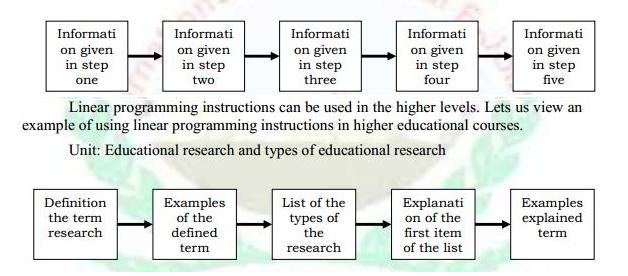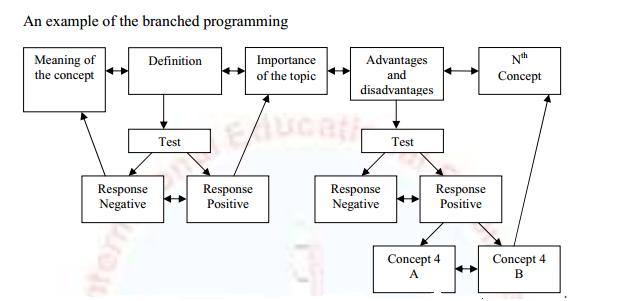Dr. V.K.Maheshwari, M.A(Socio, Phil) B.Se. M. Ed, Ph.D
Former Principal, K.L.D.A.V.(P.G) College, Roorkee, India
 The business of education today is to teach the growing individuals, so far as their original natures will permit, to perform efficiently those activities that constitute the latest and highest level of civilization. Since the latter consists entirely of activities, the objectives of education can be nothing other than activities, and since, after being observed, an activity is mastered by performing it, the process of education must be the observing and performing of activities.
The business of education today is to teach the growing individuals, so far as their original natures will permit, to perform efficiently those activities that constitute the latest and highest level of civilization. Since the latter consists entirely of activities, the objectives of education can be nothing other than activities, and since, after being observed, an activity is mastered by performing it, the process of education must be the observing and performing of activities.
Programmed Learning is an innovative learning style in the teaching learning process. It is useful in giving instructions in the traditional mode as well as in the distance education mode. Programmed Learning is advantageous in both the modes because it gives systematic and individualized instructions.
Frame Composition
Taber et al. (1965) suggest that a programmed frame could contain the following items:
(1) a stimulus which serves to elicit the targeted response,
(2) a stimulus context to which the occurrence of a desired response is to be learned,
(3) a response which leads the learner to the terminal behavior, and
(4) any material necessary to make the frame more readable, understandable, or interesting
They also contend that it may not be necessary to include each of these components in every frame. Some frames may contain only information with no opportunity for response, some may be purely directional.
A general PI program sequence is characterized by an introduction, a diagnostic section, an organizing set/theory section (to help learner focus on primary elements of teaching/testing section), a teaching, testing section, practice section, and finally, a review or summary is presented to reinforce all of the concepts addressed in the specific program (Bullock, 1978).
Basis of Frame Sequencing
Lysaught and Williams (1963) suggest that Programmed Instruction maintains the following characteristics ,which can provide a solid base for frame sequencing :
It is mediated.
Beginning as print-based text,
Programmed Instruction grew to leverage each new media format as technologies merged and evolved.
PI is replicable, as its results consistently produce the same outcomes.
It is self-administrating because the learner can engage in the instructional program with little or no assistance.
Its self-paced feature allows the learner to work at a rate that is most convenient or appropriate for his or her needs.
The learner is required to frequently respond to incrementally presented stimuli, promoting active engagement in the instructional event.
PI is designed to provide immediate feedback, informing the learner of the accuracy of his or her response, as well assisting in the identification of challenges at the point of need.
PI is identified by its structured sequences of instructional units (called frames), designed to control the learner’s behavior in responding to the PI.
Sequencing of Content
No standard approach exists for the sequencing of content and a variety of models are found in the literature. Lysaught and Williams (1963) describe several techniques, the first of which is the pragmatic approach, or the organization of behavioral objectives into logical sequence. “This order is examined for its internal logic and flow from beginning to end. Often an outline is developed to ensure that all necessary information/steps/components are addressed and that nothing important is omitted”
Another common approach to sequencing content was developed by Evans, Glaser, and Homme (1960), and is known as the RULEG system. The RULEG design is based on assumption that material to be programmed consists of rules or examples. So, the rule is presented, followed by examples and opportunities to practice. In some instances, the reverse approach, EGRUL, is used, presenting the learner with a variety of examples and guiding the behavior to comprehend the rule.
There are two types of frame sequencing in program instruction; linear sequencing and branching sequencing. Skinner invented the linear sequence. Norman Crowder created the branching sequence.
The goal of early developers of programmed instruction was to design the instructional activities to minimize the probability of an incorrect response (Beck, 1959). However, much has been made of the distinction between what some have called Crowder’s (1960) multiple-choice branching versus Skinner’s linear-type program . Crowder, like Skinner (1954, 1958a) likens his intrinsic system to a private tutor. Although Crowder himself claimed no theoretical roots, his method of intrinsic programming or “branching,” was developed out of his experience as a wartime instructor for the Air Force.In a sense they were talking about two very different things. Skinner was writing about education and Crowder was writing from his experience in the teaching complex skills to adults with widely varying backgrounds and abilities. The issue is informative, however. Neither man wanted errors per se.
Linear sequences
The credit of linear programming style goes to B. F. Skinner. Linear programming style is related to “operant conditioning”. Operant conditioning states that human behavior is shaped through suitable reinforcement to the responses. It tells that “A Certain direction can be given to human behavior”, for this purpose activities is needed to divide in small parts and make their analysis. It is a gradual process and the responses are conditioned in a step by step manner.
Linear Programing involves the following features:
o Learners are exposed to small amounts of information and proceed from one frame or one item of information, to the next in an orderly fashion (this is what is meant by linear)
o Learners respond overtly so that their correct responses can be rewarded and their incorrect responses can be corrected
o Learners are informed immediately about whether or not their response is correct (feedback)
o Learners proceed at their own pace (self-pacing)
Fundamental Principles of Linear Programing
Linear programming is based on five fundamental principles-
1. Principles of small step.
2. Principle of Active responding.
3. Principle of immediate confirmation.
4. Principle of self pacing.
5. Principle of student testing.
In this type of sequencing all students read and respond to the same frames. The sequence is linear in that there is a single line or path for all students to follow.
While programming in linear way the information is broken down in pieces of related information and then they are sequenced into meaningful steps. The information which is to written in the steps is planned out. The information should be so written that it should be linked to the information in the next step. The learner has to respond to each step actively and the reinforcement is given immediately. The reinforcement depends on the correctness of the responses given by the learner. If the response is correct a positive reinforcement is given, motivating the learner to attempt more responses which will be positively reinforced
A pictorial representation an example of linear programming –
 Each square represents a frame. The student proceeds from one frame to the next until he completes the program. Most linear sequences use the constructed (or fill-in) response.. Many new programs, however, use both constructed and multiple-choice responses. Although most linear sequences use shorter frames than those used by the branching sequences we describe below, the single-sentence or short frame is not an essential characteristic of linear sequences. Markle (1964) developed a linear sequence on programming which contained frames which were paragraphs or longer in length. Even the major characteristic of linear sequences—the use of the single path—is no longer rigidly prescribed.
Each square represents a frame. The student proceeds from one frame to the next until he completes the program. Most linear sequences use the constructed (or fill-in) response.. Many new programs, however, use both constructed and multiple-choice responses. Although most linear sequences use shorter frames than those used by the branching sequences we describe below, the single-sentence or short frame is not an essential characteristic of linear sequences. Markle (1964) developed a linear sequence on programming which contained frames which were paragraphs or longer in length. Even the major characteristic of linear sequences—the use of the single path—is no longer rigidly prescribed.
Lysaught and Williams (1963) show many ways in which a linear sequence can be modified into a multipath program. An interesting variation is the linear sequence with criterion frames. These frames test entering behavior at various points in the program to determine whether the students should go through the sequence of frames which follows. If this is not necessary, the student is directed to a subsequence, which will move him quickly to an advanced point in the program.
Advantage of Linear Programing
The assumption behind the linear programming is students learns better if content is presented in small units, students response if immediately confirmed, results in better learning, Student’s error create hindrance in learning, Student learns better in Laissez fairy environment.
Frame size in small steps; include only one element of topic at a time. Each step is complete in itself. It can be taught independently and can be measured independently. Frame structure is based on stimulus-Response-reinforcement. There are four types of frames. Introductory frames, Teaching frame, practice frames and testing frames.
Responses in linear programming are structured responses and these are controlled by programmer and not by learners. Immediate confirmation of correct responses provide reinforcement, wrong responses are ignored.
It is used for secondary level students, used for achieving lower objectives of learning especially for recall and recognition, useful for student of average and below average intelligence can be used in Distance education program.
Limitations of Linear programming-
1. No freedom for student to response.
2. Based on learning theories which were formulated by experience conducted on animals. A human being is more intelligent, than animals, he has got an intelligent brain.
3. Every learner has to follow the same path; therefore, student may cheat from one another.
4. Wrong responses are avoided in the program No remedy is provided for them
Branching Sequences
The founder of Branching programming is Norman A Crowder. It is based on configuration theory of learning. It is a problem solving approach. It is stimulus centered approach of learning. As the word “branching” means the subdivision the stem or trunk. The same concept is applied in the branched programming instruction style. The main concept (the trunk of the tree) is sub divided into smaller concepts (the stems of the tree) and further again to other minute details of the topic.
Fundamental Principles of Branching Programming
1. Principle of Exposition,
2. Principle of Diagnosis,
3. Principle of remediation.
Branching programmed learning is similar to linear programmed learning except that it is more complicated because it attempts to diagnose the learner’s response. It usually involves a multi-choice format:
After the learners have been presented a certain amount of information, they are given a multiple-choice question. If they answer correctly they branch to the next body of information. If they are incorrect, they are directed to additional information, depending on the mistake they made. Many CBT training courses are based on the concept of linear or branching programmed learning.
The best known branching technique is called intrinsic programing. Frame size is large. There may be a Para or page in the frame. It consists of rather long frames which often appear as pages in an ordinary textbook. The student reads the page (or frame) and then responds by selecting the correct alternative in a three-alternative multiple-choice item. Each alternative is associated with a page number which directs the students to another frame. Frame structure is Exposition- Diagnosis- Remediation types. There are two types of frames- Home page (for teaching and diagnosis) & Wrong page (for remediation). Responses not rigidly structured and responses are selected by learner and not by the programmer. Confirmation of correct responses provides reinforcement. Wrong responses also help in diagnosis of weaknesses of the learner. Remedy is provided on the basis of diagnosed weaknesses of the learner. Remedy is provided on the basis of diagnosed weaknesses. Error helps in diagnosis of the weaknesses of learner. More than 20% error rate can be accepted. The purpose of Branching programming is to draw out weak points of learner and provide remedy for recovering those weaknesses.
Branching programming is used for secondary as well as higher classes. Higher objectives can be achieved such as multiple discrimination etc. It is useful for students of above average and high intelligence. It can also be used in Distance education programs.
The advantages of branched programming instructions are as follows –
Assumption behind this programming is that a student learns better if he is exposed to whole situation or content. Student errors help in diagnosis. Student learns better if remediation is provided side by side.And a Student learns better in democratic environment.
In this format the student proceeds to the next frame until he makes an error. The errors branch him to supplementary material designed to give him remedial instruction
The center of the teaching – learning process is the learner and not the facilitator or the instructor.
The learner learns with his or her own speed and pace.
Much of the learning takes place when freedom is give to the learners. In branched programming style freedom is given to the learners so that they can learn at their own pace.
Learning is done when the new concepts are revised. The learner gets an opportunity to travel to and fro in the newly learnt content. If the responses given by the learner are not up to the mark, the learner can start learning the content from which he or she has not understood. The correct responses are appreciated there by internally motivating the learner to grasp the content till the end.
Limitations of Branching programming
1. It does not consider learning process whether learning is taking place or not. Main emphasis is on diagnosing the weakness of learners and providing remedy to them.
2. There is no sequencing of pages. Student finds it difficult to follow the steps. He does not find it exciting or motivating, therefore he does not want to go through these pages.
3. More emphasis on remediation rather than teaching. Hence, it is only a tutorial approach
The matter or the concept is placed in a logical sequence in both the programming methods. The difference is the simplicity of the presentations of the matter. In linear programming the subject matter is presented in a straightforward and uncomplicated form. It follows a certain direction. Whereas the branched programming follows a complicated format, which does not follow a definite direction, it is like a scrambled book where the pages do not follow the normal sequence. As the linear programming the subject matter is presented in a straightforward and uncomplicated format it is used for fixing of learning and generally meant for the lower classes. But this is not in the case with branched programming. The subject matter is in complicated format generally meant for higher class students.
Mathetics Programming
Another well known, but less widely adopted programming method was developed by Gilbert (1962). This approach, called mathetics, is a more complex implementation of reinforcement theory than other sequencing strategies. This technique is also referred to as backwards chaining,since the design is based on beginning with the terminal behavior and working backwards through the process or concept, in step-wise fashion.
The founder of Mathetics is Thomas F. Gilbert. “Mathetics is defined as a systematic application of reinforcement theory to the analysis and construction of complex repertoires which represent the mastery in subject matter.” It is based on Connectivist theory of learning. It is a reverse chaining approach. It is based on Principle of chaining, Discrimination and Generalization. Mathetics programming is based on assumption.
1. Chaining of responses helps in learning to reach up to mastery level.
2. Reverse chaining of stimuli helps in learning, i.e. from whole to part, from Complex to simple.
3. Completion of task provides motivation to students.
Frames size is organized in small step but in a reverse chain i.e. from complex content to its small, simple units to attain mastery level frame structure is based on Demonstration-prompts-release. There are two types of frames- 1. Demonstration frames 2. Prescription frames.
Responses are structured responses and responses determined by the programmer. Completion of task provides reinforcement. Wrong responses are ignored. Error helps in discrimination but not in learning. Its main purpose is to develop mastery of the content. Main focus is on Mathematics and grammar.
It used for higher classes useful for complex and difficult task, Useful for developing concepts of mathematics and grammar. It can be used in Distance Education.
Limitation of Mathetics programming:
1. Main emphasis on mastery of the content rather than changes in behavior of the learner.
2. Retrogressive chaining of stimuli if not effective for terminal behavior.
3. It is very difficult to develop retrogressive learning package.
The matter or the concept is placed in a logical sequence in both the programming
methods. The difference is the simplicity of the presentations of the matter. In linear
programming the subject matter is presented in a straightforward and uncomplicated
form. It follows a certain direction. Whereas the branched programming follows a
complicated format, which does not follow a definite direction, it is like a scrambled
book where the pages do not follow the normal sequence.
As the linear programming the subject matter is presented in a straightforward and
uncomplicated format it is used for fixing of learning and generally meant for the lower
classes. But this is not in the case with branched programming. The subject matter is in
complicated format generally meant for higher class students.

